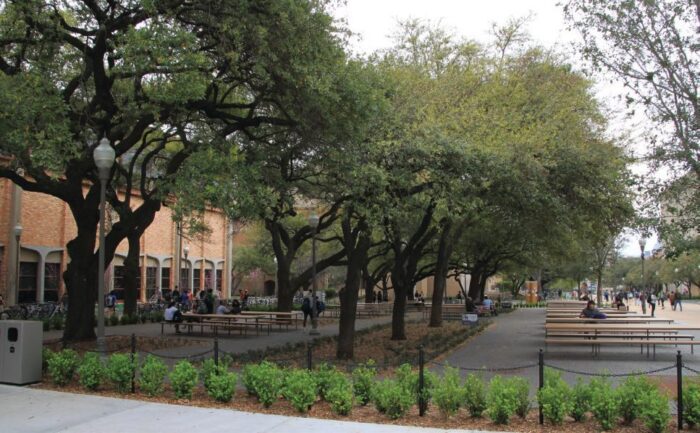Getting Geotechnical: Calming the Storm with ESCS

Storm intensity and the loss of pervious surfaces pose significant challenges for infrastructure design. When stormwater is unable to drain properly, it can flood around buildings. Unfortunately, extended saturated conditions can damage aging foundations and erode soils, potentially leading to uneven settlement, cracking and bowing. But complex stormwater solutions can be cost- and maintenance-intensive, making them impractical for many projects.
To meet the challenge, low-impact development techniques with expanded shale, clay or slate (ESCS) offer a promising approach to mitigating stormwater issues at a grassroots level. Structurally sound and inert, ESCS is made by expanding and vitrifying raw shale, clay or slate, which creates a network of unconnected pores that adsorb and store water efficiently. Such permeability also makes ESCS suitable for managing stormwater in landscape design.
Civil and structural engineers can recommend easy-to-integrate, green infrastructure systems with ESCS to address the challenges of stormwater management. This approach also contributes to sustainable and resilient building practices.
Engineering Soil for Better Stormwater Management
Permeable and lightweight ESCS, with its angular network of pores, allows civil and structural engineers to direct, filter and store runoff away from structures into detention or treatment systems—located above or below surface—to manage stormwater. The aggregate’s structural integrity, reduced bulk density and excellent porosity when compared to traditional aggregate, enhance a soil’s drainage capacity, mitigating flooding and the pressure exerted on foundations by soil expansion.

ESCS lightweight aggregate stabilizes soil by promoting stormwater management and supporting vegetation growth. Expanded Shales, Clay and Slate Institute
Recognizing the advantages of ESCS in managing stormwater, the University of Texas at Austin incorporated ESCS in the air-entrained, load-bearing soil beneath permeable pavers on campus. The soil media contained 80 percent coarse ESCS aggregate and 20 percent approved soil, compacted in place at a 24-inch depth. Because ESCS is free-draining yet stores moisture in the small capillary pores, it slowly releases moisture back into the soil as it begins to dry, supporting vegetation growth. This researched and proven mix design enhances infiltration and filters total suspended solids, heavy metals, nitrogen and phosphorus from the runoff before they contaminate water reserves.
Moreover, ESCS media provides deep aeration and high nutrient-holding capacity. This promotes roots to grow into the soil rather than at the surface or toward underground utilities, which they do when searching for air. ESCS aggregate restores nature’s geometry (a porous environment) to compacted soil conditions, resulting in healthier vegetation in urban settings.
Landscaping With a Purpose
ESCS’s ability to store water and nutrients makes it suitable as a growing medium when combined with select soil components pertaining to the intended design. Its high and predictable friction angle (typically 35-45 degrees) also helps create soils that are resistant to erosion. For this reason, ESCS-engineered soil can be integrated into many landscape elements such as tree pits, root paths under walkways, raised planters, turf areas, filter strips, rain gardens and green roofs. These green features serve the practical and natural purpose of aesthetic appeal while capturing rainfall. In addition, ESCS soils resist over-compaction; therefore, if space is limited but depth is available, building teams can install ESCS soil mix up to 5-6 feet deep, increasing storage for runoff.
Leveraging the many benefits of its material properties, the University of Utah installed a rain garden with ESCS near its Civil and Materials Engineering building to capture stormwater runoff. The design included a layered subsurface system of lightweight expanded shale, an amended soil layer and a rock mulch layer. The application proved highly effective in mitigating stormwater and beautifying the campus, prompting the university to implement similar solutions across the property.
Adding Beauty to Structural Integrity
Stabilizing soils despite stormwater challenges is crucial to civil and structural engineers responsible for ensuring the structural integrity of a building. Low-impact, green infrastructure solutions with ESCS soil allow rain to infiltrate where it falls, reduce flooding and mitigate stormwater’s impact on a building’s structural systems. ESCS soil mixes last for decades and are sure to extend the service life of structures, utilities and streetscapes, contributing to a sustainable future. 
About Debra Stringer
Debra Stringer has worked for Carolina Stalite Company in Salisbury, N.C., for 25 years, representing ESCS primarily for the landscape, stormwater and filtration industries; email: [email protected].


